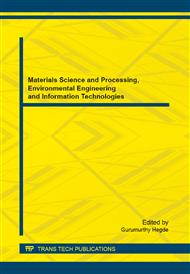p.3
p.11
p.17
p.21
p.26
p.30
p.37
p.42
p.49
Finite Element Analysis of Coating Interface Stress Field of Laser Cladding CBN Coating on Titanium Alloy
Abstract:
Laser cladding technology is used to prepare TC11 titanium alloy surface coated CBN. Through the finite element method to simulate the movement of scratch experiment. When coating is under normal force and tangential force, through changing the thickness of the layers , the coating crack length and width of crack, coating in force is analyzed when the interface stress affects on coating.Simulations that the interface stress value of 0.2mm coating reach to 1.485Gpa, The interface stress value of 0.5mm crack length reach to 0.3707Gpa, The interface stress value of 0.06mm crack width reach to 0.2234Gpa.
Info:
Periodical:
Pages:
26-29
Citation:
Online since:
October 2014
Authors:
Keywords:
Price:
Сopyright:
© 2014 Trans Tech Publications Ltd. All Rights Reserved
Share:
Citation:


